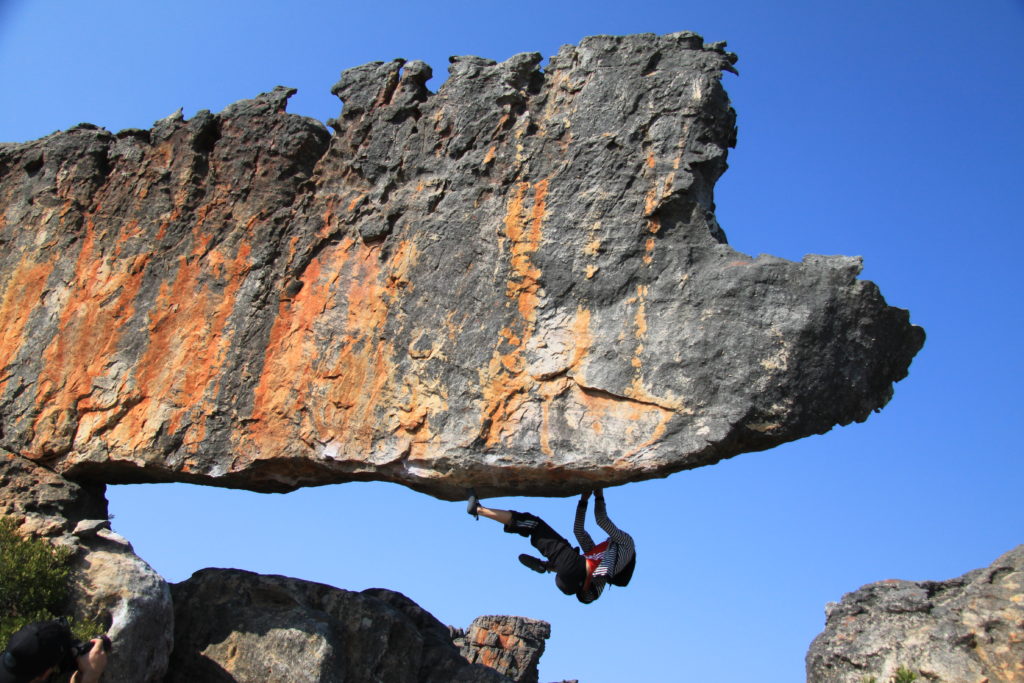Did you know that Rocklands, in the northern Cederberg, is the world’s premier bouldering destination? Located on the Pakhuis Pass, close to Clanwilliam, the area is a magnet for climbers from all parts of the world. This is because of the range of challenges for every climbing grade thanks to the variety of sandstone structures in the region. But what is the sport of climbing anyway and how can you get involved? CapeNature had the chance to ask professional climber, Matthew Bush.
Climbing – an introduction by Matthew Bush (Instagram @mattclimber)
View this post on Instagram
It’s the information age and there is an exponential amount of knowledge at our fingertips today. It sure is exciting but can also be overwhelming. Where to start? The new challenge is finding the right information. This article will make it easier for you to get into this exciting sport. Here is a simple, no-frills and friendly introduction to climbing.
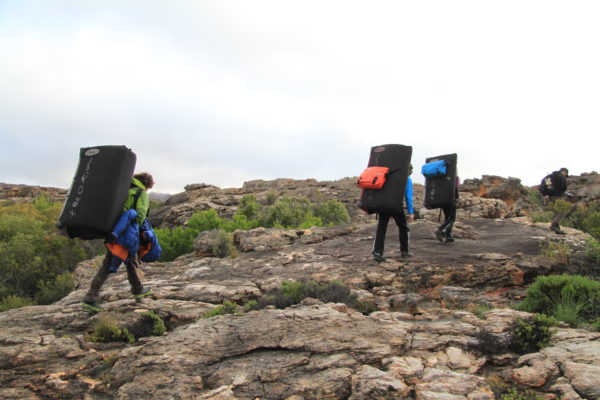
What is climbing?
Climbing is using the body and the mind to overcome a steep object. The object can be artificial for example an indoor climbing wall or natural like a boulder, rock face or mountain.
Why climbing? What is the point of hugging a rock or mountain?
The reasons for climbing are plentiful. Some say because it’s there. I think it’s a great exercise to strengthen the body and the mind. You get to keep fit and experience the benefits of contact with nature. Climbing teaches problem solving skills. You must learn to adapt your body to the rock and solve the climb like a body puzzle. Mental and physical flexibility, goal setting, positive mind-set, regulating stress and fear, commitment, trust, communication and teamwork are some of the great benefits climbing has to offer. Not to mention the beautiful views and fresh air out here.
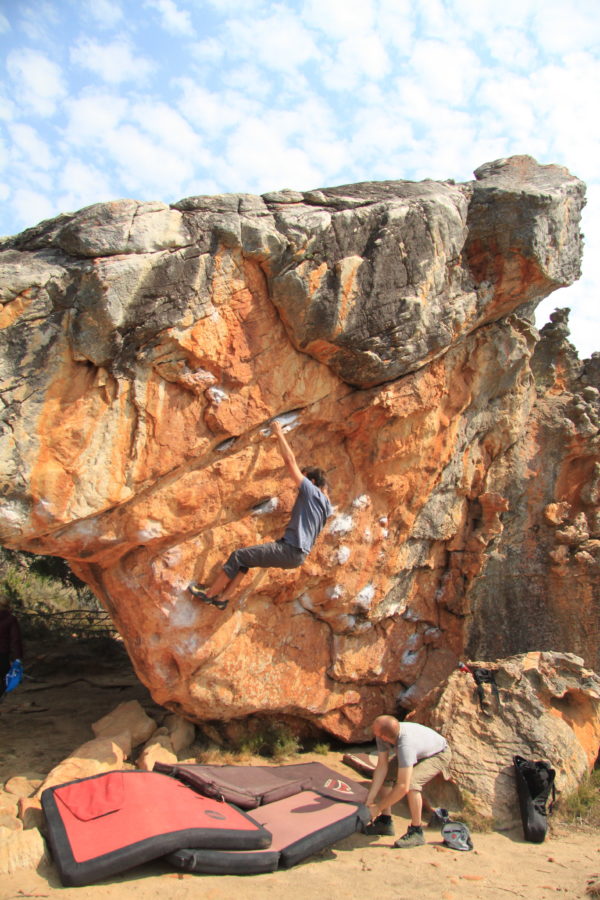
Is climbing safe?
Climbing is as safe as the practices you follow. This means that your safety has to do with your own knowledge, skills and training level. When you’re just starting out it’s not possible to have adequate knowledge of how to climb safely. So it’s important to find a reliable source of information and at best learn to climb with a professional or someone or a group of people who know. In this way you learn how to be safe and also make sure you are moving correctly on the rock.
I want to climb but I’m afraid of heights? Is it possible?
There is a natural amount of fear in climbing. The fear of heights is instinctual to some degree. Important is to breathe, relax and encourage yourself positively. In this way you can learn to manage your fear and not let it stop you from the climbing experience. Very strong fear responses to height often result from formative experiences. This means that it is a learned response to an event previously experienced. New learned responses to heights can be positive and reaffirming. With the right coach you can learn to feel safe and secure all the time.
What is bouldering, sport climbing, trad climbing and free solo?
Bouldering is climbing on boulders or very short rock faces or indoor walls up to four meters. Boulderers use chalk, climbing shoes and boulder mats. Sport climbing is climbing rock faces, indoor walls or mountains using gear and safety equipment. Sport climbs can be ten meters to hundreds of meters high and more. Sport climbs have permanent bolts drilled into the rock for safety by the climbers who established the routes. Traditional climbing involves placing one’s own gear into cracks, fissures and natural features for protection as one ascends. Free solo is climbing high rock faces and mountains without the use of safety gear. It is not advised due to the nature of the risk involved. It is always better to learn to climb with safety equipment, at the very least a boulder mat to protect the fall.
Do I need equipment to climb? And isn’t it expensive?
There are different types of climbing which require different kinds of equipment. Bouldering is the simplest form of climbing and a great way to start. I started bouldering with bare feet and some chalk on rocks close to the ground. Chalk is used to keep the hands dry and helps with gripping. But what if you fall? I climbed easy rocks without any danger of falling and usually traversing left and right just 30cm off the ground. These are known as lowballs. I could step off the rock rather than fall off. Now that’s ok but what when you want to climb higher or tackle more challenging objects where falling is a real possibility? Then it’s a good idea to invest in a boulder mat. What’s that? This is a high density foam mat that folds in half and is carried on the back resembling Sponge Bob’s square pants. Lol! Just kidding about Sponge Bob. This mat is placed at the bottom of the climb. If you fall then you can land onto the mat. The mat absorbs some of the impact force for a safer landing. Climbers usually come together contributing there pads to each climb so that there are many pads for better safety. It is also possible rent pads in Rocklands so you don’t have to buy one. But if climbing is something you love then it’s worth getting your own. Safety is always a worthy investment. Pads cost between R1500 for the smaller types and R6000 for bigger ones. When it comes to climbing higher rocks, cliffs and mountains then ropes and additional safety gear is needed.
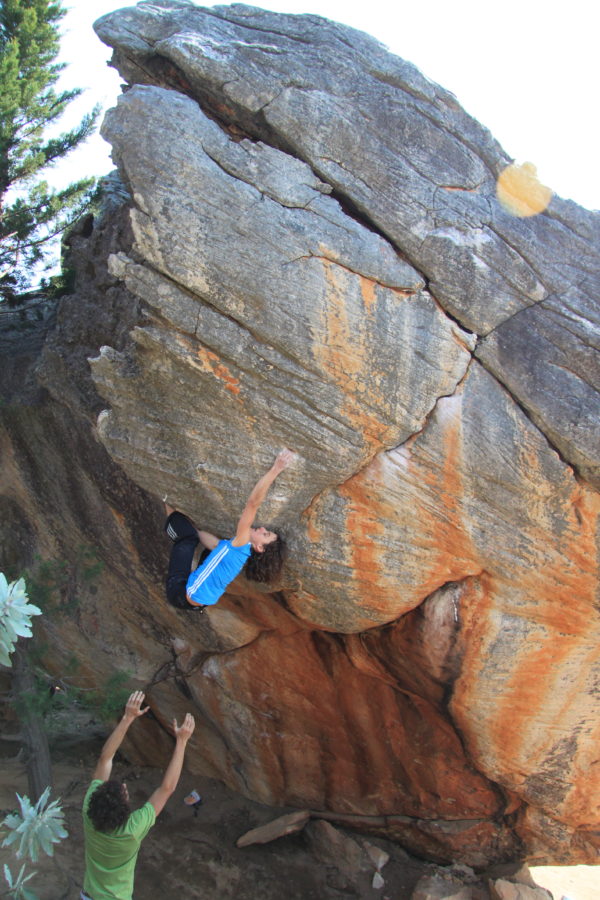
What about climbing shoes? Are they necessary?
Climbing shoes can help with the grip on the rock but are not necessary. The feet like the hands can develop the strength for gripping naturally and especially with practise. I climbed for 19 years with shoes and recently transitioned to bare foot again. All indoor climbing gyms require that you wear shoes for climbing. I use shoes at the local gym but outside I really love to climb barefoot. It feels natural, simple and very tactile. The choice of shoes or no shoes for outdoor climbing is really up to you. If you get a pair of shoes fit your shoes to comfort. There should be no excess room in the shoe. The fit should be snug but not painful to walk in. Over tight shoes make climbing a horrible experience. The right shoe can make it a lot more fun.
Do you have to be strong to climb? I can’t do a pull-up so I don’t think I’ll be any good at climbing
Technique is more important then strength for climbing. You don’t need strength to start climbing. In fact climbing will give you strength. More important is basic techniques. There are some simple methods that you can use to make it easier for you. We will be covering some of these soon. Tip: it’s important to start at the right level. If you feel weak then start with the easiest level possible and feel success. Progress upwards to more challenges from there. It can be very demoralizing to keep failing on climbs without success. But the right level of challenge ensures that you feel success and enjoy yourself and keep coming back for more climbing.
Where are the best spots to learn to climb?
Rocklands is a world class climbing location. There are plenty of beginner boulders to learn on. All of the areas that have been developed have boulders at the beginner level. The beginner level is grade 3, 4 and possibly 5. If you don’t have a guide for the area then consult the Rocklands guide book. Or use the 27 Crags app to locate beginner climbs at these levels.
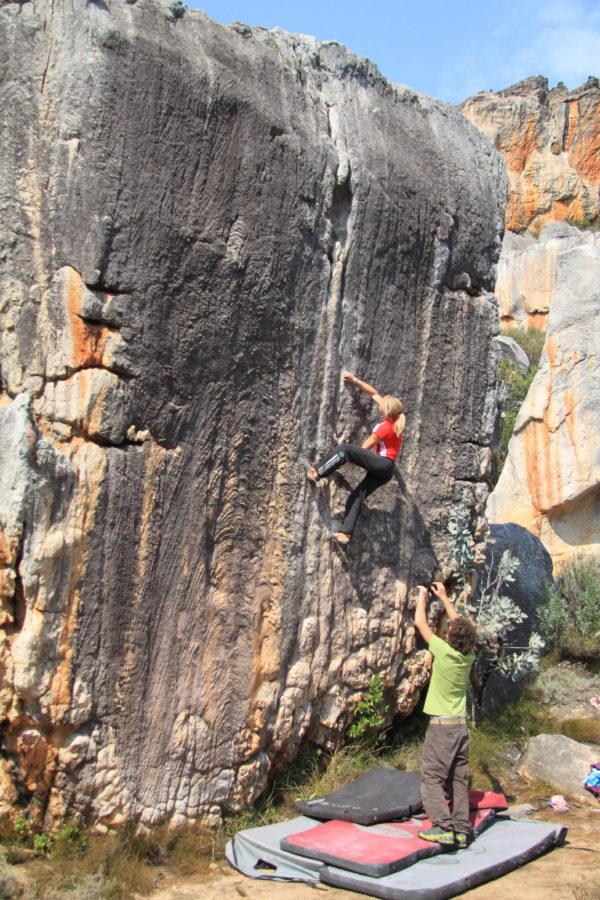
My friends and I want to go bouldering for the day. We rented a boulder mat. We have climbing shoes and chalk. Is there anything else we should take with?
There are easy access climbing areas in Rocklands and then areas that involve 30-45 minutes hiking. It’s important to be properly prepared for the mountains when climbing in areas further out. I advise carrying a first aid kit, 1.5l-2l water, hat and sunblock (for summer months), a windbreaker, warm jacket as well as some snacks and food. And of remember your permit and emergency contact numbers. Emergency services : 10177. Dr. Strauss 027 482 1629. Clanwilliam Hospital: 027 482 2166.
What are the dangers to lookout for in the landscape?
Cederberg is a big wilderness area. Humans share the space with many other species of animal, plant and insect life. It is always important to move around the landscape mindfully. There are scorpions, snakes and spiders. Some of which are venomous. They will only attack you out of defence. Try to be aware of the space so than you don’t step in their direction or mistakenly onto one of these creatures. If you are bitten be sure to call the emergency numbers above.
Possibly the most serious hazard to lookout for when climbing is unstable and loose rock. Cederberg is an extremely rocky terrain. There have been serious incidences in the area due to rock falls. Rocks have fallen onto people and rocks have broken while climbing. The mountain is mistakenly referred to as Terra Firma. However the landscape is dynamic and not firm. Rocks undergo cycles of change from cooling, heating, forces of water and wind. This creates weakness and fractures in the rock. Be aware of rock. Just because it’s there doesn’t mean you should climb it. Don’t assume the rock is strong because it’s rock. I often ask myself questions in the interests of safety. For example, “Is the rock solid?” “Is that hold strong?” “What would happen if the hold broke while I was climbing?” I test holds by looking for lines of weakness and fractures. Inspecting with my eyes. Then I thump the hold to hear for solidity (if it is hollow sounding then it is weak) then I feel for flexing or movement by pulling on the hold in multiple directions (if it flexes or bends it is weak). If the answer is yes to any of the tests avoid climbing on that hold or rock. Remember the weight of the rock can crush.
How do I find out more information about climbing or arrange my first climbing lesson?
Contact Matt @mattclimber on Instagram. Alternatively call 065 603 1067 or email [email protected]. To plan a trip to Rocklands in the Cederberg, read more here: Rocklands Bouldering.
Pictures: Supplied




